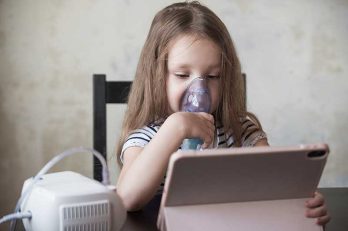The first steps of your baby are more than just a physical achievement; they represent their blossoming independence and a significant developmental leap. These initial wobbles and falls can be both thrilling and unsettling for parents. As your infant begins the journey toward walking, he or she will require your guidance, support, and encouragement. In this exhaustive guide, we will discuss a variety of techniques that will assist you in teaching your child to walk with confidence.
1. Tummy Time Is Crucial
The path to walking begins long before your infant takes his or her first steps. It begins with building strength and coordination. Tummy time is a basic but essential exercise that helps your infant develop strong neck, shoulder, and abdominal muscles. Each day, place your infant on their stomach for brief periods, allowing them to raise their head, reach, and eventually roll over – essential skills for walking.
2.A sturdy baby walker can be useful
Wheeled infant walkers can be a useful aid on your child’s path to walking. These walkers provide your child with the opportunity to practice standing and taking modest steps. Choose a walker with a wide base to prevent it from toppling over. To ensure safety, it is essential to note that a baby walker must always be used under close supervision.
3. Establish a Conducive Environment
In an effort to walk, furniture and low shelves can become your baby’s best companions. Your child will frequently practice standing by pulling themselves up on these robust objects. By strategically placing these objects throughout your home, you provide a conducive environment for your infant to investigate their newly acquired verticality.
4. Lend a Helping Hand
During the beginning stages of walking, your child will benefit tremendously from your support. Holding their hands as they endeavor to stand or take their first steps aids in the development of their balance and confidence. As they become more stable, progressively reduce the amount of assistance you provide, allowing them to find their footing.
5.First and foremost, baby-proof your home
Before your baby begins walking, it is essential to make sure your home is secure for their explorations. The process of baby-proofing entails securing heavy furniture to the wall, covering sharp corners, and installing safety barriers to prevent access to potentially hazardous areas. By creating a safe environment, you give your child the freedom to experiment without taking unnecessary risks.
6.Toys as Motivational Instruments
Toys can be effective motivators for your infant to move and investigate. Place their favored toys just beyond their reach to encourage them to walk or crawl toward them. This approach makes learning to walk an exciting experience.
7. Celebrate Every Step, Regardless of Its Size
Learning to walk involves numerous stumbles and tumbles. Nonetheless, it is essential to acknowledge every effort your infant makes, regardless of how modest. Clap, smile, and offer words of praise in order to enhance their self-esteem and encourage them to continue working hard.
8. Foster Independence
As your infant acquires confidence and stability, encourage them to take independent steps. Allow them to explore their abilities at their own tempo, even if it means they choose to crawl rather than walk on occasion. This autonomy is essential for their development.
9.When necessary, seek out professional advice
Every child develops at a different rate, and it’s natural for parents to worry about their infant’s walking development. If you ever have queries or concerns, please consult your pediatrician or a child development specialist. They can offer helpful advice and rule out any underlying problems.
The conclusion
Helping your child learn to walk is a journey filled with joy, difficulty, and innumerable precious moments. You can help your child develop the self-assurance and independence necessary for confident walking by providing support, fostering a secure environment, and recognizing each small victory. Remember that every infant is unique, so be patient and enjoy every step of their remarkable growth. They’ll be taking their first independent steps before you know it, leaving you both filled with pride and awe. Celebrate this incredible stage of parenthood and your child’s incredible voyage towards walking!



